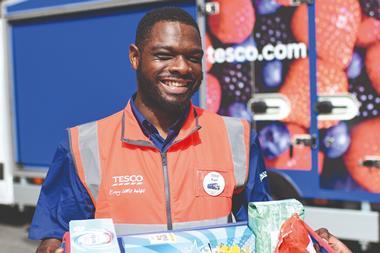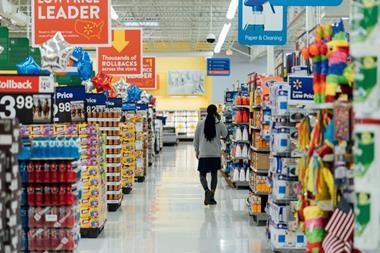
Retailers and banks share a fundamental problem: legacy IT systems hold them back from being leaner, smarter, more customer-focused businesses.
For the past year, we’ve worked with a high street bank to untether them from technology systems that are expensive to run and no longer fit for purpose. During this time, we rebuilt the bank’s current account business from the ground up, delivering the equivalent of a five-year transformation programme at a 10th of the cost. There’s nothing stopping supermarkets from doing the same. They’d be able to deliver faster and better commercial decisions, drive down operating costs, and give customers a stand-out experience in store and online.
At the bank, customers are flocking to open new digital accounts. Eventually, the old IT system will be retired, leaving the bank with significantly reduced operating costs – 70% lower – without having gone through either a full-scale transformation or customer migration exercise.
Here’s how they did it.
First, the chair of the board and COO took ownership. At least one champion at the executive board level is essential, because they have the power to stop other distracting programmes that drain time and energy. It’s not unusual for a business to have over a dozen strategic initiatives running simultaneously, but experience proves that to keep focus and create real change this must be trimmed to just one or two.
Read more: Lessons in digital transformation from Alibaba, Hema & Kroger
Second, the bank digitized a whole business area. Focusing only on a single system or process will not deliver the scale of change required, while trying to digitise everything is overambitious. The bank focused on current accounts, while for retailers we believe that commercial decision making is the ideal candidate for a greenfield transformation.
Setting the boundaries for what’s in and what’s out of the greenfield build can be difficult, because the new business unit still needs to work with the other parts of the company and their legacy technology. For example, the data the commercial team gets in from suppliers will be in the same old format, and the data sent out to stores must be compatible with the stores’ current systems.
In such a setting, it can be tempting to keep adding on to the project. The bank succeeded because it didn’t touch anything outside of the current account business. Behind the scenes, current accounts had transformed, but to adjacent teams on the old system no change was required or noticeable.
The third step was developing a bespoke system that cherry picked the best component parts to deliver the bank’s objectives.
Unless it’s possible to open a satellite office in a trendy part of town with free lattes, an office dog and hyper-flexible working hours, many big incumbent retailers will be unable to attract and retain the best people to build their new technology platform in-house. Instead, it makes more sense to hire or buy what’s needed.
Opinion: Cybersecurity is a vital cost and needn’t be complex
Technology service providers will always try and sell long-term end-to-end solutions based on their products. This must be avoided. In a world where technology changes rapidly and game-changing innovation is just as likely to come from a startup as an internet giant, committing to a single system will only set you up to being behind the times again in another five or 10 years.
A greenfield project should be agnostic and agile when it comes to the technology built, bought or borrowed. Combining capabilities from a range of providers creates a cheaper, more effective, and easier to evolve system. For the bank, this approach also allowed them to maintain tight ownership of the data moving through the system and establish a strong failsafe to lock out providers at the end of a contract or in the event of a cyber-attack.
The final step in creating the bank’s new digital business was establishing the new team. The size and shape of the workforce had to change. They required tech-savvy people comfortable enough with data and insight to know how and when to overrule an incorrect automated decision and understand what part of the programming caused the error. Being able to attract this type of talent will be a determining factor in whether any greenfield project succeeds in the long term.
As they increasingly struggle to compete against each other as well as low-cost and online retailers, a greenfield digitisation project can provide a supermarket with a fast way to reduce costs and increase competitiveness. By learning from what banks have done, retailers could reduce operating costs in commercial teams by 50%-75% while simultaneously improving outcomes and laying the foundations of a fundamentally enhanced customer offer. It’s an exciting prospect, and we look forward to seeing which business will be the first to take this decisive step towards becoming the supermarket of the future.
Deborah O’Neill is partner and UK head of digital at Oliver Wyman



















No comments yet